

To be honest, I had no idea what to expect last week when I climbed to the top floor the LA Convention Center to play-test Elite: Dangerous. I was lukewarm to the game, at best. But after experiencing it first-hand and talking with developers, I can’t help feeling an icy shiver while writing about it. Elite: Dangerous is fantastic, the most immersive game I’ve played in recent memory. Forget any other upcoming MMO for the Xbox One. This is the one you should care about.
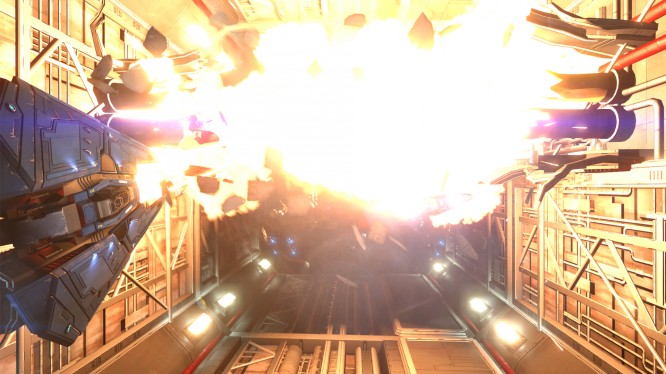
The last time I played an Elite game, I was a child playing a port on the NES. And to be honest, it didn’t blow me away. Call it immaturity. Space trucking, intergalactic economics, and faction warfare didn’t grab me; I was much more enthralled by action games and platformers like Double Dragon, Contra, and Super Mario Bros. And my school’s Apple II played The Oregon Trail, nothing else.
As I’ve grown older, simulation games have become much more appealing. Though I often joke about titles like European Truck Simulator and Farming Simulator, there is something in them that peaks my adult curiosity. Realistic flight simulators fascinate me, too, especially space flight simulators. I have killed countless hours building ships for the Kerbal Space Program, and I avoid EVE Online like the plague, fearing I’ll spend too much on ships and upgrades.
But I felt nothing for the game while I climbed to the second floor of the LACC (immediately above the E3 media room, go figure). It was another game in a sea of titles. I needed to take notes. I needed to record audio. I needed to write.
When I entered the exhibition room, though, I felt my adult curiosity begin to peak again. Without pausing to sign in, I sat in front of a monitor, grabbed a controller, and started playing. The experience, though overwhelming, was incredibly immersive. I almost missed my appointment.
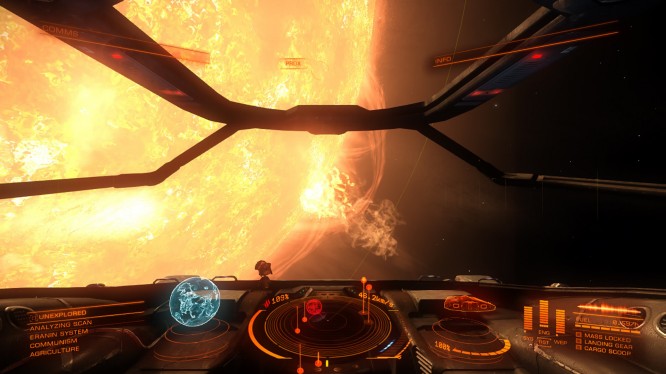
Imagine sitting in a real-life cockpit. There are buttons, dials, and levers around you, overhead, and underneath you. Looking through your dashboard, you can see a limited field of stars, planets, and various other celestial bodies. Sensors and screens on your dash tell you various power levels and hull statistics.
This is the key concept behind Elite: Dangerous’ heads up display: to make the player feel like a real-life pilot in a real-life space ship. And flying is hard. While zooming through the cosmos and shooting bad guys, I had to balance shield capacity, speed, and weapon charge–a complex energy system that, when mismanaged, resulted in near-instant death.
Elite: Dangerous is a 1 to 1 scale recreation of the Milky Way. One hundred billion star systems have been mapped into the game. Nothing is randomly generated; no stars are cosmetic. See a super nova? Want to see it up close? You can, if you have enough patience. Just set your bearings and fly to it, no loading screens. Elite: Dangerous is huge.
On top of that, players have the power to do whatever they want. Exploring, training, fighting, mining, and pirating are all viable gameplay options for users. “No one believed we could do it,” Executive Producer Ben Dowie said during his E3 presentation, “but we did.” Elite: Dangerous is a true next-gen sandbox.
The simulation I played was a dogfighting training program. In it, I battled endless waves of ever-increasing enemies. While they fired at me, I dropped my speed and powered up my shields. When they passed me, I slowly increased speed while lowering my shields and powering my guns. While chasing, I dropped speed to increase turn radius; when locked, I hit my thrusters to close distance. And so on; I survived over ten waves.
As a trained real-life pilot, I was surprised by the game’s realism. There is limited gravity (I’m not sure whether the developers factored planets’ gravitational pulls into ships’ flight mechanics–I wouldn’t doubt it), meaning torque during aerial maneuvers is practically non-existent. That said, aileron rolls, Immelman turns, and barrel rolls work realistically and are viable dogfighting maneuvers. By correctly controlling your ship’s speed during turns, you can out-perform enemies and destroy them.
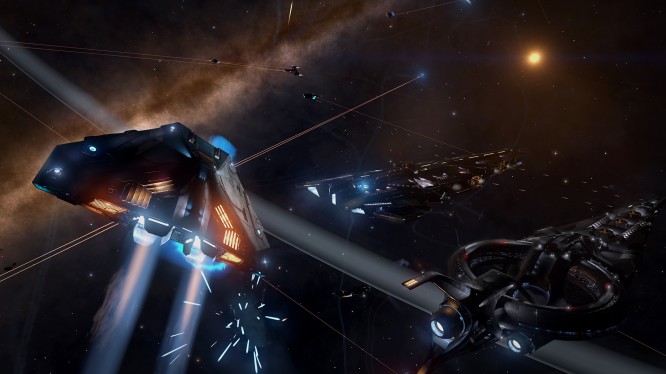
The controls aren’t intuitive, but Frontier does a great job mapping an entire keyboard onto an Xbox controller. Click the left joystick to switch between turns and strafes. Use the D-pad to control the energy systems. Shoot enemies with the triggers, and lock-on with A (I think). After about five minutes of gameplay, the controls started making sense, and I had a lot of fun playing with them.
Apparently, by toggling a certain menu, players can view and interact with different parts of the cockpit. Unfortunately, I was unable to experiment much with the controls, and I was unable to learn any of the more complicated operations. By the time I started feeling comfortable enough with the action controls, the developers had started their Xbox presentation.
None of these features or mechanics are new or exciting for Elite: Dangerous veterans (aside from the controller mapping). Everything above is a pre-existing element in an incredible game. Frontier knew this while preparing their E3 presentation, so they hid a couple tricks in their sleeves.
First, Elite: Dangerous on Xbox will have access to friends lists and achievements. The “Elite” achievement, specifically, is the hardest achievement to obtain on Xbox Live.
Second, Elite: Dangerous will be the first game on the new Xbox Preview Program. Players with an Xbox Silver account will have access to the single-player campaign. Xbox Gold members will have access to the full experience.
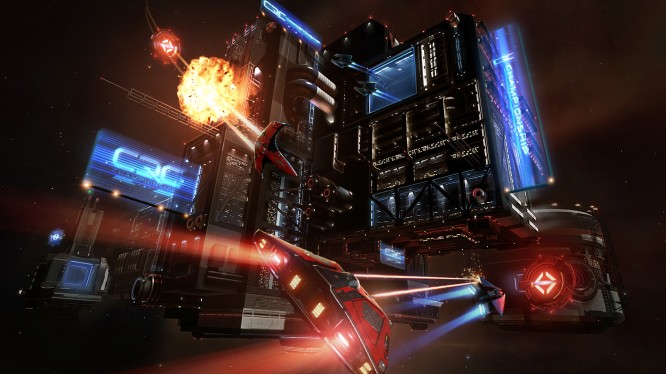
Third, the Xbox version of Elite: Dangerous will feature a brand new game mode never seen before in any other Elite game: Close Quarter Combat (CQC). In CQC, players will have access to a limited number of small ships. These ships compete head-to-head in arena style games that range from “king of the hill” to “capture the flag.” The game escapes the trappings of a traditional MMO and offers a fresh competitive mode akin to a MOBA. Ben Dowie couldn’t help smiling during the video presentation. While watching a ship weave through the inner workings of a space station, he interjected.
“It’s like when you watch Star Wars as a kid,” he said. “It’s like that when you’re playing.”
The mode will feature 2 to 4 new maps (depending on development), 3 new ships, and a several new weapons and abilities at launch. To keep the game balanced, Frontier promises that all skill progressions made in CQC will be limited to CQC. That way, players that spend 200 hours in the arena will not disrupt the balance of the core MMO.
Elite: Dangerous is free-to-play and smart glass supported. It will be available on PC and Mac later this year.
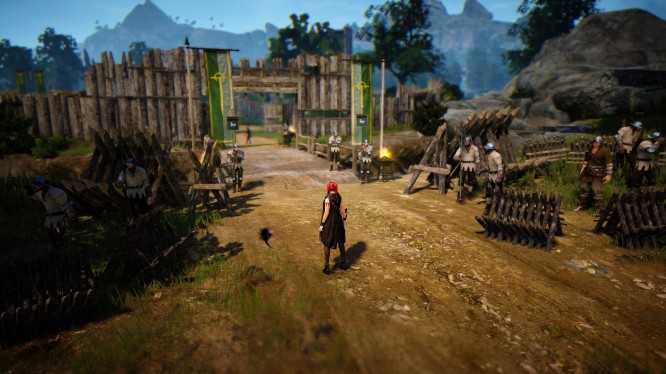


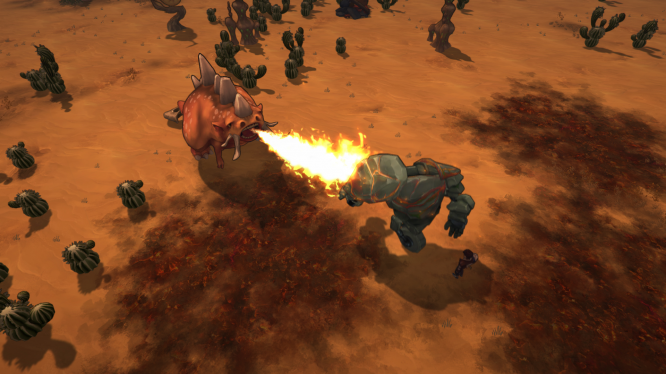
 Online Games in Japan Part 2: Of English Titans and Japanese Indies .
Online Games in Japan Part 2: Of English Titans and Japanese Indies . Aion: Class Skill Overview - What's Changing with Update 4.5?
Aion: Class Skill Overview - What's Changing with Update 4.5?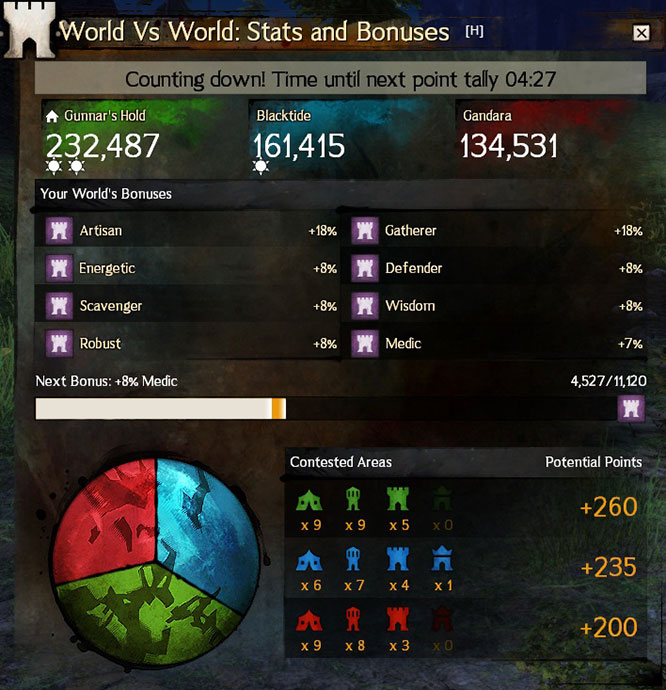 GW2: World vs World Beginner's Guide .
GW2: World vs World Beginner's Guide . PAX AUS Interview: BattleCry with Executive Producer Rich Vogel .
PAX AUS Interview: BattleCry with Executive Producer Rich Vogel .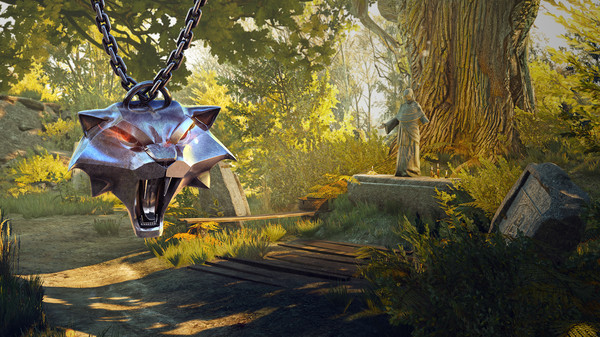 The Witcher 3 DLC Guide: How To Get New Quest Where the Cat and Wolf Play
The Witcher 3 DLC Guide: How To Get New Quest Where the Cat and Wolf Play